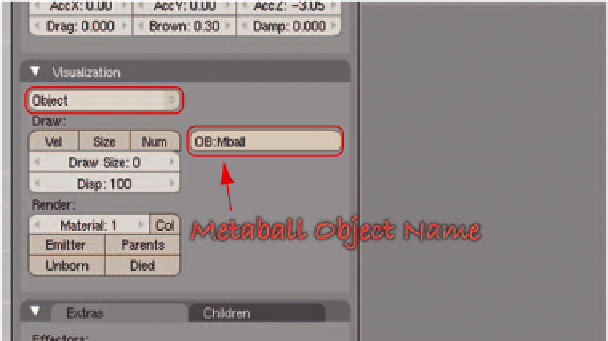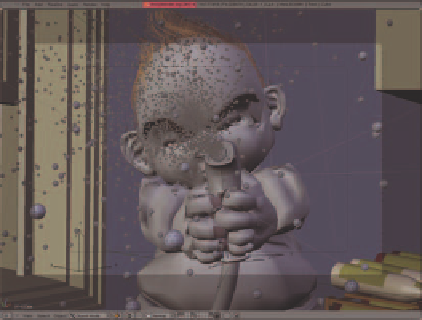Graphics Reference
In-Depth Information
While metaballs can gener-
ate some fairly believable liquid
effects, they have some drawbacks.
Dealing with metaball proper-
ties and sizes can be very touchy,
and you can spend a lot of trial-
and-error time getting the merge
thresholds just right. The other
problem is that when employed
with any signifi cant amount of
particles (above 3000 on my test
system), the surface calculations
take so long that it makes them
nearly unusable. Other problems
in visualization of particles as
metaballs seem to pop-up from time to time as well, suggesting that that portion of Blender may still have a
few bugs.
Figure 14.18
The visualization settings for using metaballs
This was the problem I ran into in
The Beast
. While metaballs would have produced a more believable liquid
effect, they simply took too long to calculate. This would not have been a deal breaker if the calculations were
only done once for the fi nal render. The real problem is the inordinate amount of time it took to test things
and get them to behave properly.
Instead I decided to use a simple icosphere for the particle visualization. The sphere uses a transparent mate-
rial that fades out toward its outer edges and uses the fake refl ection texture discussed in the previous chapter.
In conjunction with motion blur, it gives a passable effect when animated. A shot from the fi nal scene can be
seen in Figure 14.19.
Figure 14.19
Particle spray visualized as icospheres



Search WWH ::

Custom Search